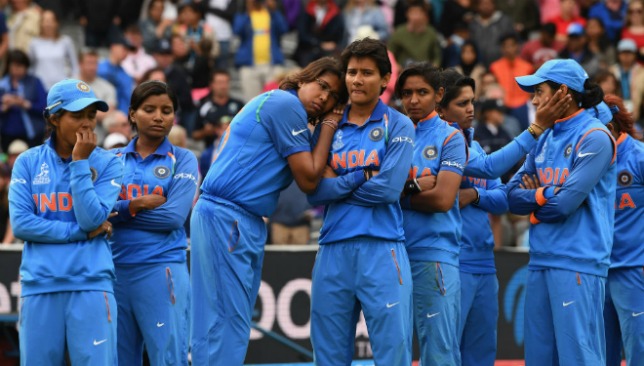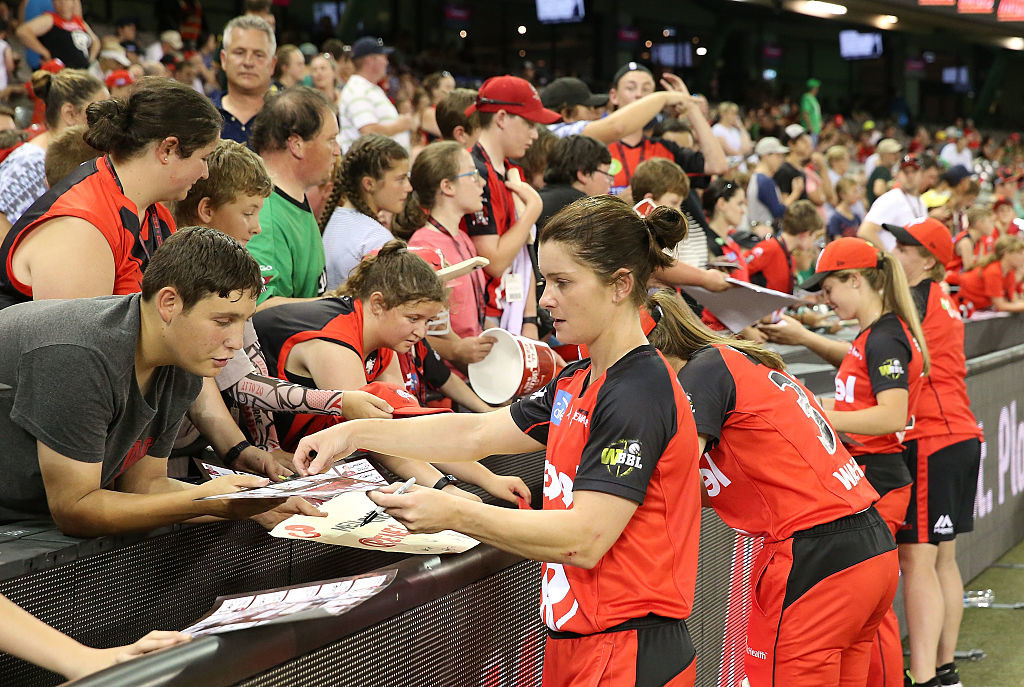
India’s women’s cricket team has sparked a wave of interest in the women’s game in the country courtesy of the magnificent run to the final of the ICC Women’s World Cup in England.
They were on course for a historic first World Cup title before a late charge by the hosts denied them the coveted honour.
India’s long time captain Mithali Raj spoke after the game about the how the pressure had got to the middle order at the death stages resulting in the mini-collapse. Over 26,000 spectators attended the final at Lord’s in one of the most watched game of women’s cricket ever as television viewership records were broken in the process.
It would have been the first time ever India have played before such a massive crowd along with the scrutiny which comes with such widespread media coverage.
While cricket dominates the entire cultural landscape of India, the development of women’s cricket is still at a nascent stage. It was only in 2005 that the Women’s Cricket Association merged with the BCCI to bring women’s cricket into the mainstream fold.
Post the defeat at Lord’s, Raj has mentioned that the time is right for a women’s Indian Premier League (IPL). Something similar was said by Australian skipper Meg Lanning post her Southern Stars winning the Women’s Ashes as well their third consecutive World20 title in 2014. A year later, the Women’s Big Bash League (WBBL) was formed as an addition to the men’s domestic Twenty20 league.

The WBBL has managed to draw in huge numbers for the women’s game.
Since its inception, the WBBL has done tremendous work in attracting people towards the game. According to figures released by Cricket Australia, over 121,000 fans attended the 2016-17 WBBL, while over one and a half million tuned in to watch the live streaming of the non-televised matches.
The Melbourne Derby saw record attendances of over 24,000 people. The WBBL also had an average television audience of over 240,000 people, beating the viewership averages of men’s domestic football league, the A-League.
The England and Wales Cricket Board (ECB) have founded something similar in the form of the Women’s Cricket Super League launched in 2016. The Twenty20 format of the Super League will be supplemented by a 50 over competition from the current year.
This experience will make the girls better cricketers. They have shown others what is possible. At least 3 cricketers will emerge from this
— Harsha Bhogle (@bhogleharsha) July 23, 2017
The then Board of Control for Cricket in India (BCCI) President Anurag Thakur had talked about plans for a domestic T20 league in 2016 but so far nothing has been forthcoming on that subject. While there is an annual senior women’s one day league, the absence of a systemized domestic structure for women’s cricket shows that there is merit in Raj’s comments for the need of a women’s IPL.
Women’s cricket has never quite been in the spotlight in a cricket crazed India as it has been after Harmanpreet Kaur’s sensational 171 run innings to take out the defending champions Australia in the semifinal.
There has been a sudden outpouring of support for the national team as the print, television and social media has been abuzz about the heroic of the Women in Blue. There was a 47 percent increase in the Indian television audience for the World Cup compared to the last edition in 2013.
Super proud of the girls. Tough luck today but womens cricket in India has truly arrived. Thank you girls .Salute your spirit.#WWC17Final
— Virender Sehwag (@virendersehwag) July 23, 2017
Politicians, celebrities and big corporations have come out to express their adulation for Raj’s team and various monetary prizes have been announced for the squad members by the BCCI.
Maybe it is now time for all of them to put their money where their mouth is to take Indian women’s cricket to the next stage. BCCI needs to strike when the iron is hot and there will be no better opportunity to take the women’s game in the nation to the next level. Corporations and media houses need to back up the spontaneous outburst of support into something more meaningful.
The men’s IPL has been a huge success in bringing in new talent into the national team fold. The Jadejas and Pandyas discovered in the domestic competition could similarly translate to the next Harmanpreets and Rajs for the women’s team. If the cash rich BCCI misses out on this gambit, another opportunity might just not present itself.